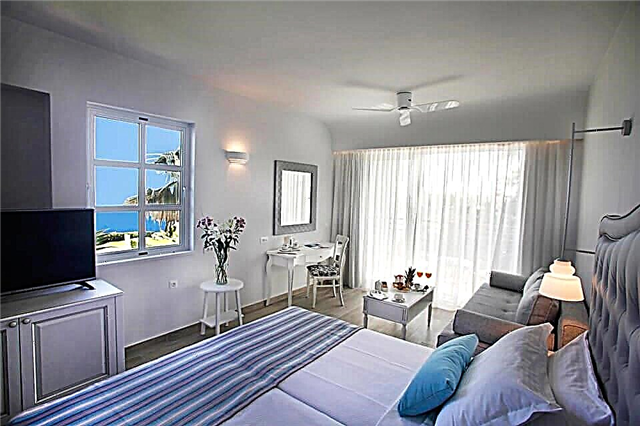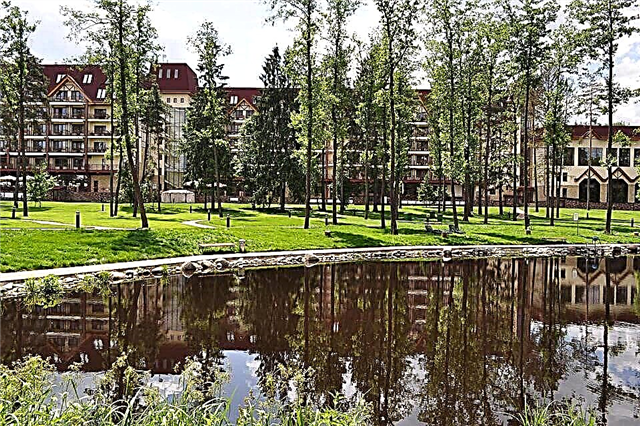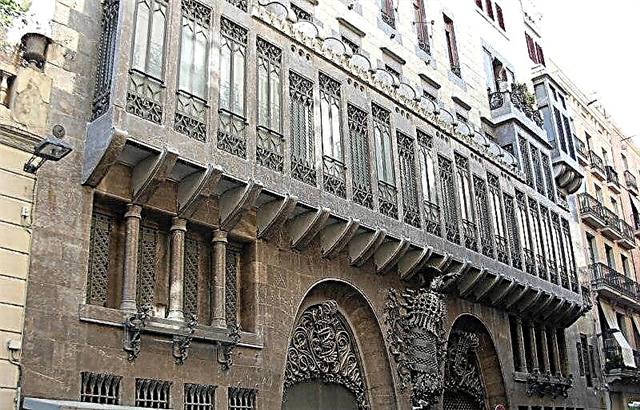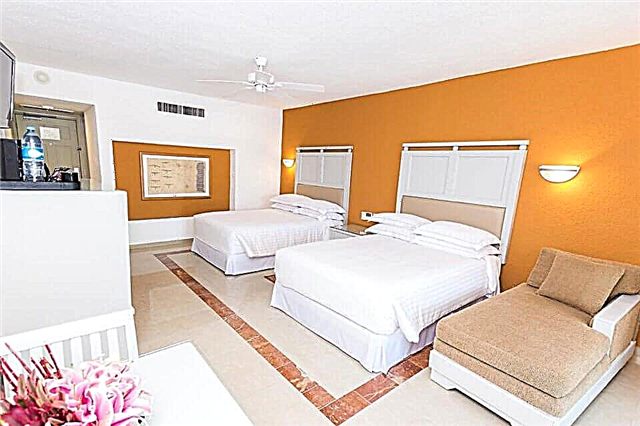The grandiose Oreshek Fort is also known as Noteburg and Shlisselburg Fortress. It flaunts at the very sources of the Neva. You can see old fortifications near the town of Shlisselburg, on Orekhovy Island. It was from him that the fortress received such an unusual name.
Features of the architecture of the old fort
The majestic defensive structure occupies almost the entire island. There are five fortress towers along the powerful wall. All of them are round, with the exception of the quadrangular gate. There is a citadel in the north-east of the fortress. Previously, it was crowned with three towers, but to date, only one has survived.

Bird's eye view of the Oreshek fortress
In addition to defensive functions, a powerful fortress also solved other tasks. For two centuries it was used by the government of tsarist Russia as a political prison.
Today the ancient fortress is neither the city's defender nor a prison. Now her lovable ensemble has become a branch St. Petersburg historical museum.

Gosudarev (left) and Golovin (center) towers of the fortress
History of the ancient fort
The first mentions of the Orekhovy Fort are found in the famous Novgorod Chronicle. She informs about the founder of the fortification and the date of construction. The first fort was erected from wood in 1323 at the behest of Prince Yuri Danilovich, the grandson of Alexander Nevsky. However, in a fire that engulfed the island 29 years later, such an unreliable structure burned down.

Tsar (Gate) tower of the fortress
Soon its place was taken by a stone building measuring 100 x 90 m. Three impressive towers were built over its 3 m walls. The settlement was located not far from the Shlisselburg fortification. The fort was separated from the suburbs by a wide 3 m channel, which was subsequently filled up. At the beginning of the 15th century, the houses of the posad were also surrounded by their own stone fence.
In connection with the inclusion of Veliky Novgorod in Muscovy, it was decided to strengthen all the fortresses on the territory of the Novgorod lands. So, on the site of the ancient Walnut Fort, a new military fortress appeared, erected according to all the requirements of the defensive art. Impressive stone walls with seven towers of various shapes were erected along the coast of the island.

Ruins of the Flag Tower of the Fortress
The massive walls stretched for 740 m. Their height reached 12 m, and the width - 4.5 m. The height of the towers varied from 14 to 16 m, and their diameter reached 6 m. Each tower had four tiers for fighting. The lowest tiers were covered with stone-laid vaults. And in other tiers there were convenient openings for the supply of ammunition and loopholes.
In the Shlisselburg Fort itself, there was another powerful fortification - the citadel. Its three towers were separated by arched galleries and a combat passage - a vlaz. These galleries, protected on all sides, were used as warehouses for storing provisions, weapons and gunpowder. The canals surrounding the citadel and equipped with folding bridges also prevented access to the fortress and, moreover, played the role of their own harbor.

Ruins of St. John's Cathedral
Fortress Oreshek in the history of the country
The Nut Fortress had an advantageous location and made the entire territory near Lake Ladoga practically inaccessible to the enemy. However, Swedish soldiers in the second half of the 16th century tried twice to capture the fort, but both times the assault attempts were unsuccessful.
The beginning of 1611 was no less stormy for the fortress. In February, hordes of Swedes again tried to encroach on the fortress. But they did not succeed in quickly implementing their plans. Shlisselburg Fort became the property of foreigners only in September. The capture of the fortification took place after a two-month siege, when almost all the defenders of the fortification died due to disease and exhaustion. From the garrison of 1,300 soldiers, fewer than 100 emaciated fighters remained.

Memorial complex dedicated to the defense of the Oreshek fortress in 1941-1943.
In 1617, the Russians and the Swedes signed an armistice, according to which the Karelian Isthmus and the coast along the Gulf of Finland passed into the possession of Sweden. The Swedes renamed Oreshek in their own way and called it Noteburg. In the possession of foreigners, the fort stood for exactly 90 years. The new owners did not seek to carry out any construction work, they only slightly renovated the old walls and towers.
In 1700 the Northern War broke out, and the main task of the sovereign was to return the fortress to the Russian state. During the years of her stay with foreigners, she did not lose her former combat capability, but her island location did not allow her to be taken overland. For this, a fleet was needed, and Peter I did not have one. But the persistent king did not deviate from his idea. He prepared in advance for the assault on Noteburg, ordering the construction of 13 ships.

New prison
The first detachments of belligerent Russians were at the walls of Noteburg on September 26, 1702, and the next day they took up the storming of the fort. Without waiting for the consent of the Swedes to surrender it peacefully, the Russians seized the fort they had previously owned. However, its official transfer took place on October 14, 1702. The remarkable date was immortalized in medals by the decree of Peter I, the inscription on which reminded of the fortress staying with the enemy for 90 years. Then Noteburg received another name - Shlisselburg, that is, "key-city". The same name was given to the posad, which stretched out on the left bank of the great Neva.

Prison interiors
Changes in architecture
The final transfer to the ownership of the Russian state was marked for the fortress by changes in its architectural appearance. Earthen bastions were built right in front of the stone towers. Each such bastion opened towards the adjacent tower. Subsequently, due to constant erosion by water, it was decided to strengthen the bastions with stone. These works were carried out in the 1750s and 60s.
As the defensive power increased, buildings for prisons began to be erected inside the fort. In 1798, the so-called "Secret House" appeared here. It was separated from the common courtyard by huge walls, and since 1826 it turned into a gathering place for prisoners of the Decembrists, awaiting their fate. Then he had a "neighbor". It was the "New Prison" intended for the imprisonment of the People's Will. Therefore, the "Secret House" turned into the "Old Prison".

Secret house in the courtyard of the citadel
In 1887, Alexander Ulyanov, one of Lenin's brothers, was executed in the courtyard of the citadel. Today a memorial plaque reminds of this event. With the end of 1917, the existence of the "Nut" prison came to an end. After 11 years, a museum was created there. The new institution performed its functions until the onset of the Great Patriotic War. During the war years, thanks to the skillful actions of the local garrison, the town of Shlisselburg, adjacent to the fortress, was liberated, which was eventually renamed "Petrokrepost". And finally, since 1966, the old fortress began to receive guests again as a museum.
The old fortress today
In the late 1960s, during archaeological excavations on the territory of the old fort, the foundations of ancient stone walls were discovered. A fragment of one of them and the Gate Tower are included in the modern exposition of the museum.

Royal tower
The defensive towers and walls have gone through several renovations. Their bottom is covered with bastions and curtains that have been preserved since the 18th century, and the upper parts were dismantled in the 20s of the 19th century.
The Tsar's Tower was restored from 1975 to 1983. Then its interiors were adapted for exhibition premises. The Royal Tower was rebuilt by the Swedes at the end of the 17th century. Of all the buildings of the old fort, it is the only one that has survived since the time of the Swedish occupation.

Ruins of the fourth prison building
The bastions were also completely reconstructed. From all the internal fortress buildings, only the soldiers' barracks have survived to this day. In the "Secret House" over the course of time, museum expositions were placed that tell about the prisoners languishing in the old fort. The "New Prison" also serves as a repository for valuable exhibits familiar to visitors with the ancient history of Russia.
Attraction rating:











